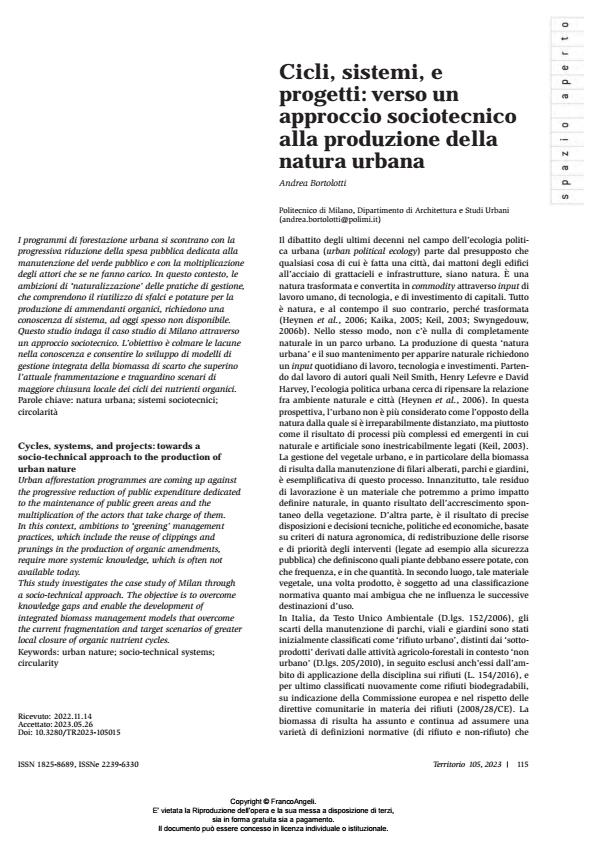Cycles, systems, and projects: towards a socio-technical approach to the production of urban nature
Journal title TERRITORIO
Author/s Andrea Bortolotti
Publishing Year 2024 Issue 2023/105
Language Italian Pages 6 P. 115-120 File size 170 KB
DOI 10.3280/TR2023-105015
DOI is like a bar code for intellectual property: to have more infomation
click here
Below, you can see the article first page
If you want to buy this article in PDF format, you can do it, following the instructions to buy download credits

FrancoAngeli is member of Publishers International Linking Association, Inc (PILA), a not-for-profit association which run the CrossRef service enabling links to and from online scholarly content.
Urban afforestation programmes are coming up against the progressive reduction of public expenditure dedicated to the maintenance of public green areas and the multiplication of the actors that take charge of them. In this context, ambitions to ‘greening’ management practices, which include the reuse of clippings and prunings in the production of organic amendments, require more systemic knowledge, which is often not available today. This study investigates the case study of Milan through a socio-technical approach. The objective is to overcome knowledge gaps and enable the development of integrated biomass management models that overcome the current fragmentation and target scenarios of greater local closure of organic nutrient cycles.
Keywords: urban nature; socio-technical systems; circularity
Andrea Bortolotti, Cicli, sistemi, e progetti: verso un approccio sociotecnico alla produzione della natura urbana in "TERRITORIO" 105/2023, pp 115-120, DOI: 10.3280/TR2023-105015